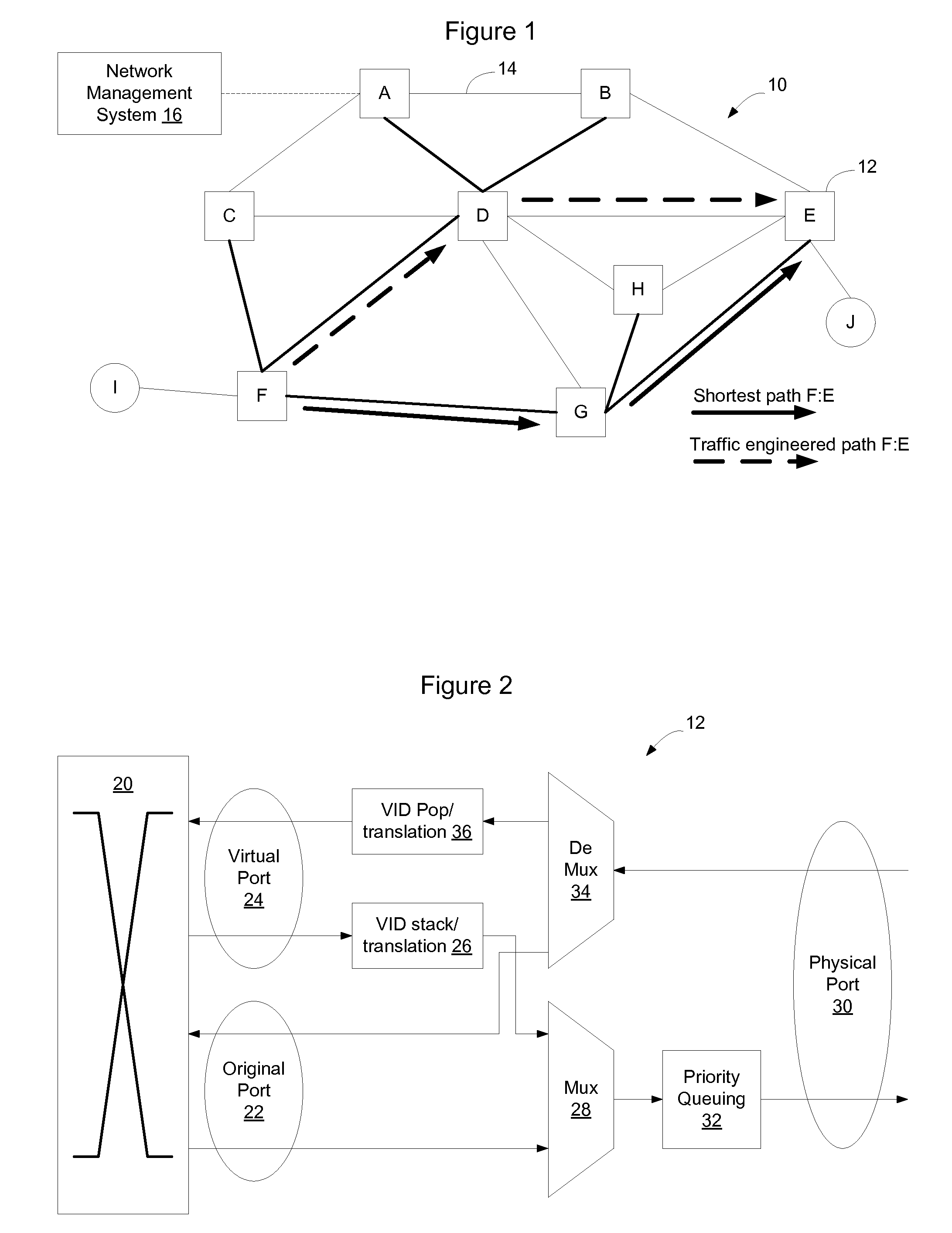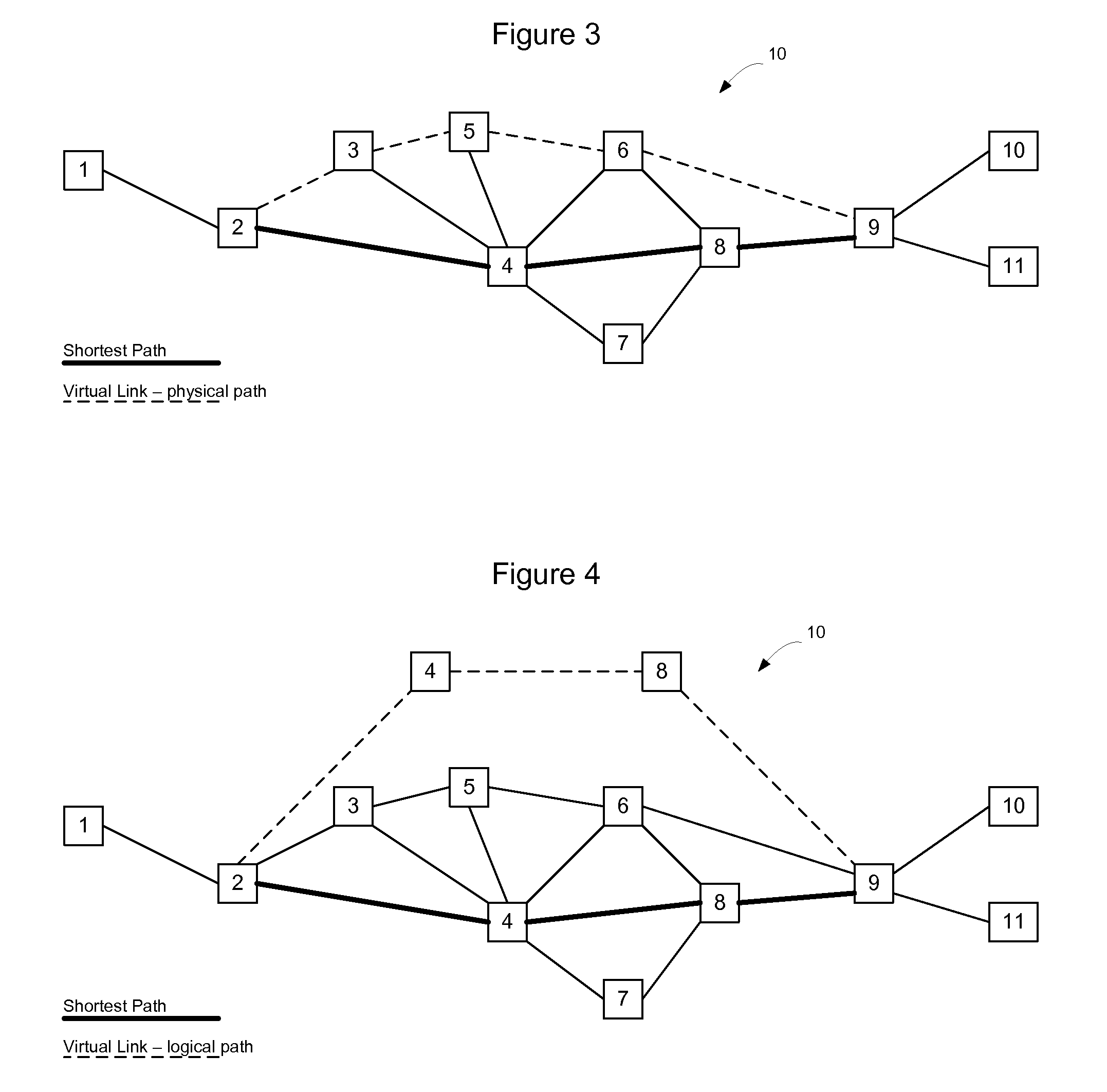Virtual Links in a Routed Ethernet Mesh Network
a virtual link and ethernet mesh technology, applied in data switching networks, digital transmission, electrical equipment, etc., can solve the problems of persistent congestion, over-utilization of links that were not non-utilization of links that weren't part of the spanning tree, so as to achieve the same cost metric and broad spectrum of traffic manipulation
- Summary
- Abstract
- Description
- Claims
- Application Information
AI Technical Summary
Benefits of technology
Problems solved by technology
Method used
Image
Examples
Embodiment Construction
[0018]FIG. 1 shows an example Ethernet network 10 including a plurality of switches 12 interconnected by links 14. The Ethernet network will run a Spanning Tree Protocol (STP) to determine which links on the network should be active and which should be blocked. Alternatively, the Ethernet network may implement a routing protocol such as Intermediate System to Intermediate System (IS-IS) to establish more efficient use of network capacity with loop-free shortest path forwarding. An Ethernet network that implements a routing protocol such as IS-IS will be referred to herein as a Link State Protocol Controlled Ethernet Network.
[0019]In a link state protocol controlled Ethernet network, rather than utilizing a learned network view at each node by using the Spanning Tree Protocol (STP) algorithm combined with transparent bridging, the bridges forming the mesh network exchange link state advertisements to enable each node to have a synchronized view of the network topology. This is achiev...
PUM
 Login to View More
Login to View More Abstract
Description
Claims
Application Information
 Login to View More
Login to View More - R&D
- Intellectual Property
- Life Sciences
- Materials
- Tech Scout
- Unparalleled Data Quality
- Higher Quality Content
- 60% Fewer Hallucinations
Browse by: Latest US Patents, China's latest patents, Technical Efficacy Thesaurus, Application Domain, Technology Topic, Popular Technical Reports.
© 2025 PatSnap. All rights reserved.Legal|Privacy policy|Modern Slavery Act Transparency Statement|Sitemap|About US| Contact US: help@patsnap.com



